RARE BOOKS
“Capacity Taste, and Fertile Imagination”
We recently purchased a copy of François Menon’s The Art of Modern Cookery Displayed (1767) for our Historical Cookbooks in the Woman’s Collection. This copy is the first edition in English of Menon’s encyclopedic cookbook, translated from the original French Les soupers de la cour (1755). Promoting simple recipes and carefully balanced flavors in the new style of haute cuisine, this was the last major French culinary text before the revolution.
François Menon was considered the most influential and prolific of all eighteenth-century cook book authors. Not only did he focus on the nouvelle cuisine of the day with its emphasis on health, but he also explored the science of cooking, wrote books for maîtres’ d’hôtel, and assigned the term “chef” to the head of the kitchen.
This present work covers all courses from entrees to desserts, and is divided into chapters dedicated to different dishes or ingredients, with extensive sections on sauces and broths, meats and fish, pastry, compotes and jams. Remarkedly, Menon selected recipes not only from French tradition but also from Italy, Germany, Ceylon, and Flanders.
The anonymous author of this English translation was Bernard Clermont, who only revealed his identity on the title page of the third edition. In the pages of this work, he described himself as “a foreigner”, stating that he worked as a clerk of the kitchen for some noble English families, including the Earls of Abingdon and Ashburnam. In his translation, Clermont preserved French terms, adding useful explanations “for the mutual Ease and Instruction of Natives and Foreigners”, and added to Menon’s text a few interesting introductory pages listing all the products that could be found in the markets of London in different seasons.
This copy has apposite provenance, with the ink stamp to the front free endpaper of the Educational Department of the Royal Baking Powder Company (founded in 1866, it was one of the largest producers of baking powder in the USA). It also has the fancifully designed bookplate of the American home economist Julia Perrin Hindley, depicting a goose wearing a toque. Hindley worked as a radio personality and wrote a number of homemaking and cookery books under the pseudonym “Julia Lee Wright” from the 1930s to the 1960s. We have some of her cookbooks in our Paul & Janice Hessling Home Economics Pamphlet Collection.
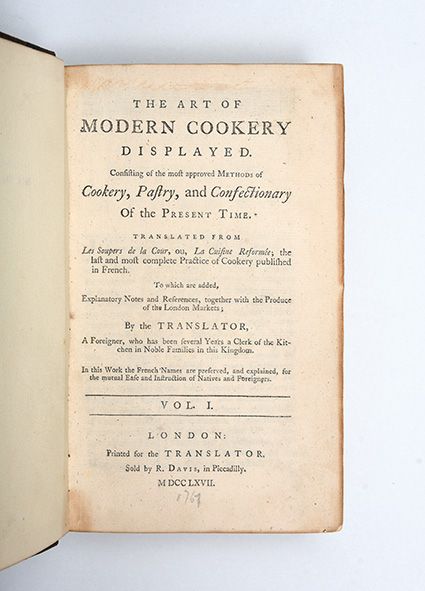
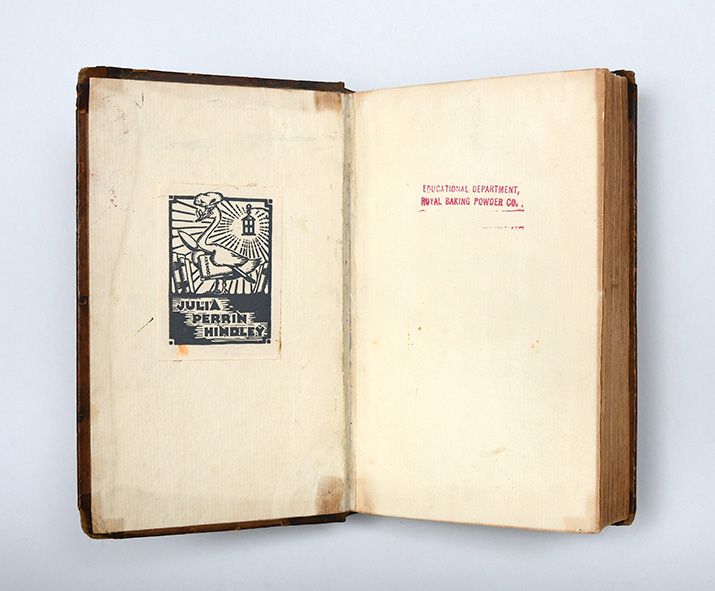
Menon, et al. The Art of Modern Cookery Displayed: Consisting of the Most Approved Methods of Cookery, Pastry, and Confectionary of the Present Time. Translated by B Clermont, Printed for the Translator, 1767.
Following The River Thames
Charles Mackay (1812 – 1889) was a widely respected journalist working for the Illustrated London News and later The Times for whom he covers the American Civil War, interviewing Abraham Lincoln. This work is the first edition of this pleasingly illustrated history of the River Thames, concluding with an account of the frost fairs that would take place when the river had frozen over.
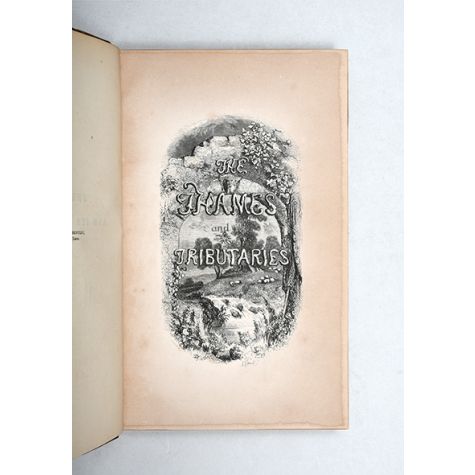
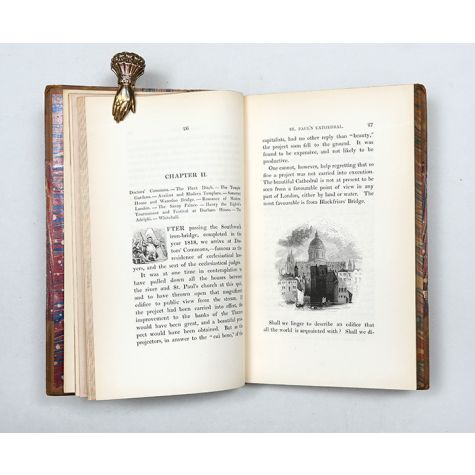
Mackay, Charles. The Thames and Its Tributaries, or, Rambles among the Rivers.
London: Richard Bentley, 1840.
A Scandalous Affair Affecting Military Readiness
The circumstances in which Mrs. Clarke (1776? – 1852) met the Duke of York (1763 – 1827) are unclear. However, from about 1803, she “made money out of her affair with the duke (which ended in May 1806) by promising promotion to officers, in return for payment. This matter was raised in the House of Commons by Colonel Gwyllym Lloyd Wardle on January 27, 1809, and referred to a select committee, which heard several witnesses testify that York has at various times tolerated or been involved in the trafficking of offices … there were no grounds for the duke’s prosecution; but his resignation as commander-in-chief on March 18 was the only way to avoid the renewal of the allegations.” (ODNB)
Our copy is the second edition, with the portrait of Mrs. Clarke beautifully hand-colored. This collection of letters and memoirs is the most reliable source of information on Mary Anne Clarke’s scandalous affair with Frederick, Duke of York, and was composed by Clarke’s close friend, Elizabeth Taylor.
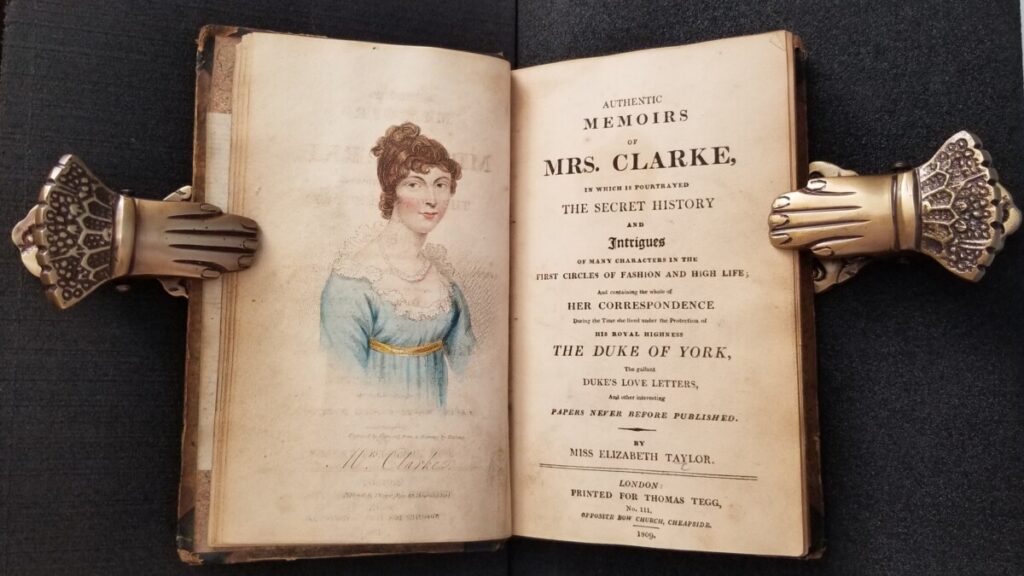
A Tale Inspired by 17th Century Witch Hunts
One of the various novels published by the journalist and novelist Thomas Gaspey (1788 – 1871) in the 1820s, The Witch-Finder narrates a tale of mid-17th-century witch hunting, purporting to be historically accurate, even if a romance.
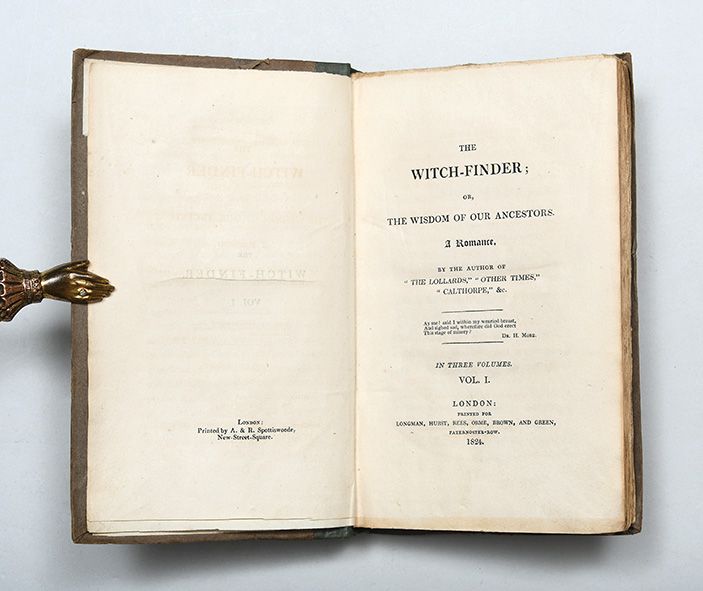
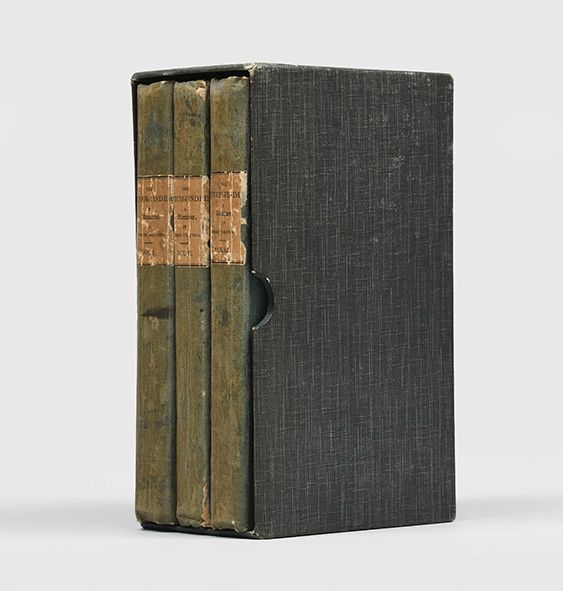
Gaspey, Thomas. The Witch-Finder; or, the Wisdom of Our Ancestors. A Romance. London: Longman, Hurst, Rees, Orme, Brown, and Green. 1824.
Jack The Ripper Newspaper Account
For the course HIS 374: British History Since 1688, Dr. Jill Bender schedules class sessions for her students to view original materials related to The Great Exhibition of 1851 (also known as The Crystal Palace) and also the sensationalism of the Jack the Ripper’s murders in the British and American press. SCUA recently added another newspaper documenting coverage of this infamous murder mystery.
Jack the Ripper was an unidentified serial killer, active in the impoverished districts in and around Whitechapel in the East End of London in 1888. In both criminal case files and the contemporary journalistic accounts, the killer was called the Whitechapel Murderer, Leather Apron, and Jack the Ripper.
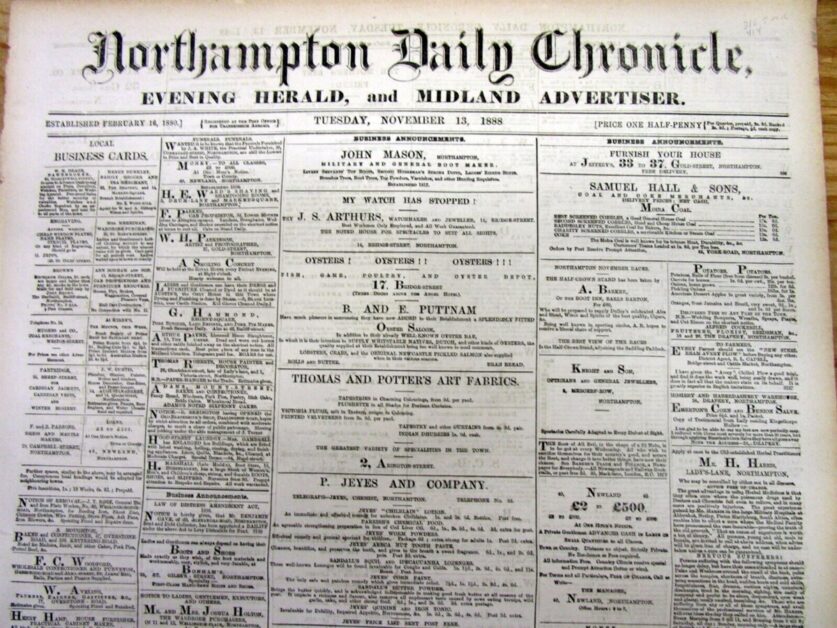
This newspaper issue details the murder of Mary Jane Kelly, the final of the five “canonized” murders attributed to Jack the Ripper:
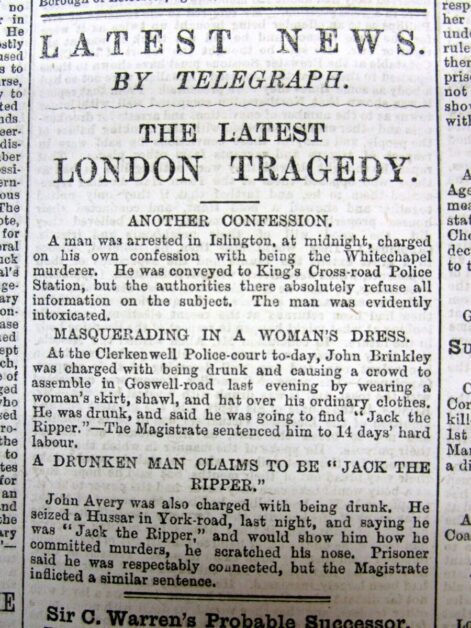
As the first image shows, the paper was discolored from acidification. Audrey Sage, Special Collections Conservator, stabilized and housed this newspaper so that students can continue to incorporate it into their class exercises. Sage writes about this process in her article, found at this link.
19th Century Word Games
SCUA hosts several classes which focus on the creation of found poems, “exquisite corpse”, and other creative writing exercises. We recently purchased two word game sets published in the late 19th century.
Anagrams; or Words Alive!
Peter G. Thomson was a Cincinnati publisher of children’s books, games, valentines, and novelties in the 1880s. His products rivaled the popularity of McLoughlin Bros, who bought out the company in 1889. Variations of anagrams and word games proliferated in the late 19th century and many publishers produced their own versions similar to Milton Bradley’s “Game of Words and Sentences,” which Bradley claimed to be the first such word game in the 1870s and published until the early 1890s, when he bemoaned the number of imitations had diminished its allure.
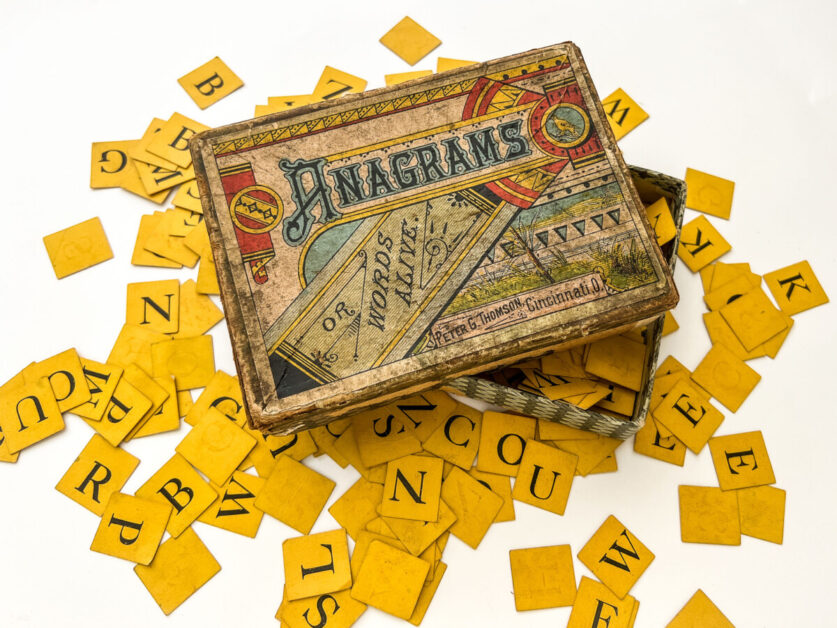
Hood’s Spelling School and Other Games
Hood’s Sarsaparilla was marketed to purify the blood and cure various disorders, including heart disease, rheumatism, and edema. The product was inspired in part by the success of Ayers’ Sarsaparilla. Hood’s Sarsaparilla contained sarsaparilla root, dandelion, juniper berries, and 18% alcohol among other ingredients.
This pamphlet and tiles were novelty advertising by Hood’s. Tiles could be acquired from the company by mailing in proof of purchase (a trademark from their wrapper), plus 8 cents in stamps. Booklet provides instructions for 10 anagram games, including one requiring special tiles that have complete words or numbers along with the letter, used to answer quiz-type questions and form sentences as part of the final game.
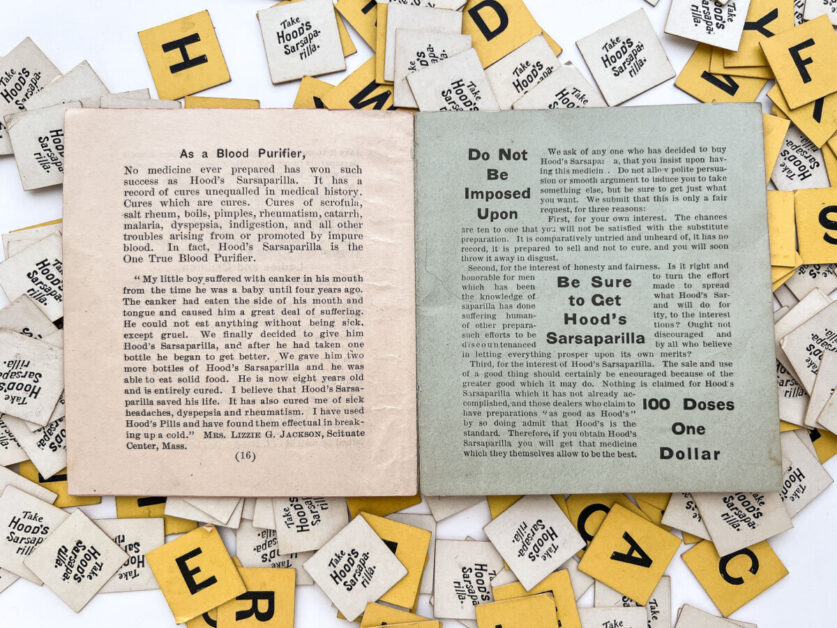
Student in Emilia Phillips’ ENG 221-02 Writing of Poetry class, having composed The Longest Word “antidisestablishmentarianism” using Hood’s tiles:
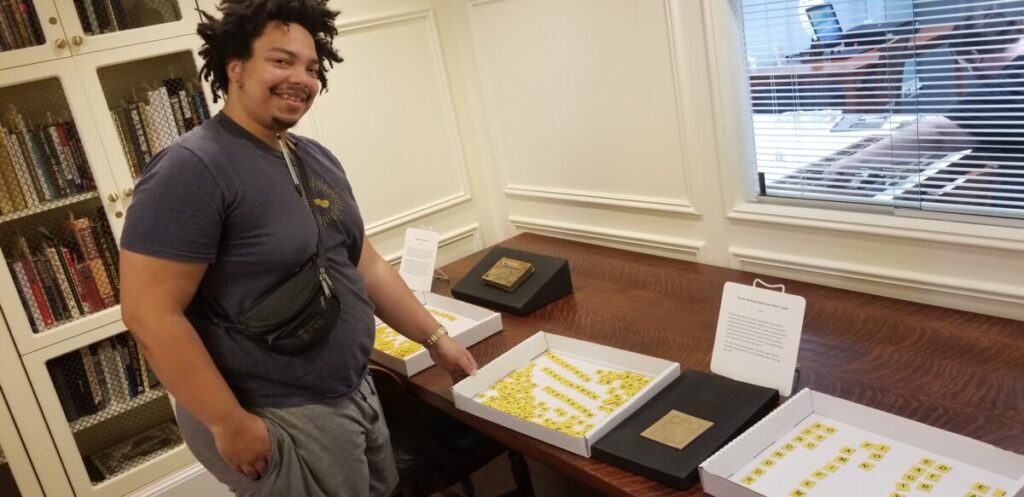
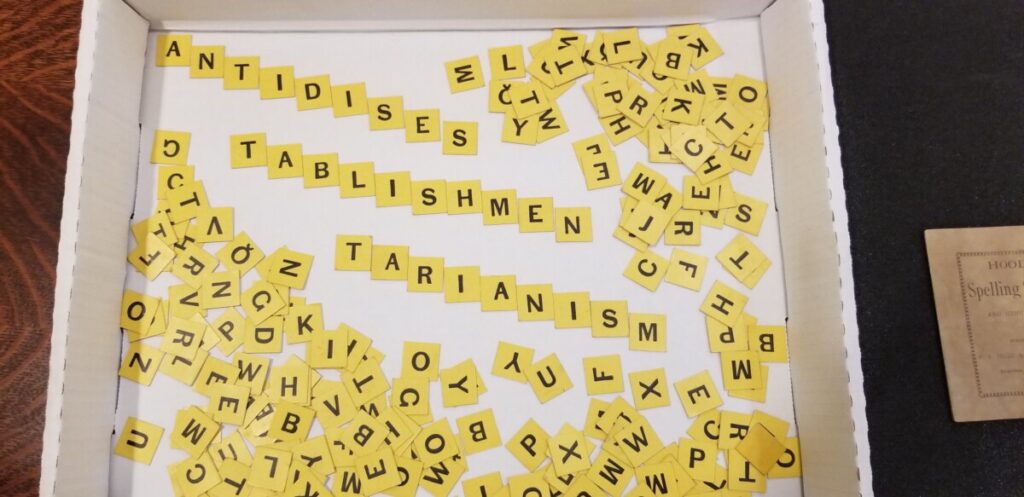
WOMEN VETERANS HISTORICAL PROJECT
Filomena “Fay” Langone Helme Collection
Helme served in the U.S. WAAC (Women’s Army Auxiliary Corps) and the WAC (Women’s Army Corps) from 1943 to 1945. She was an “Air WAAC/WAC” who was assigned to the Army Air Forces, which was the predecessor to the Air Force. The collection includes military papers, a scrapbook, and a photograph album documenting her time at the Roswell Army Air Force Base in New Mexico.
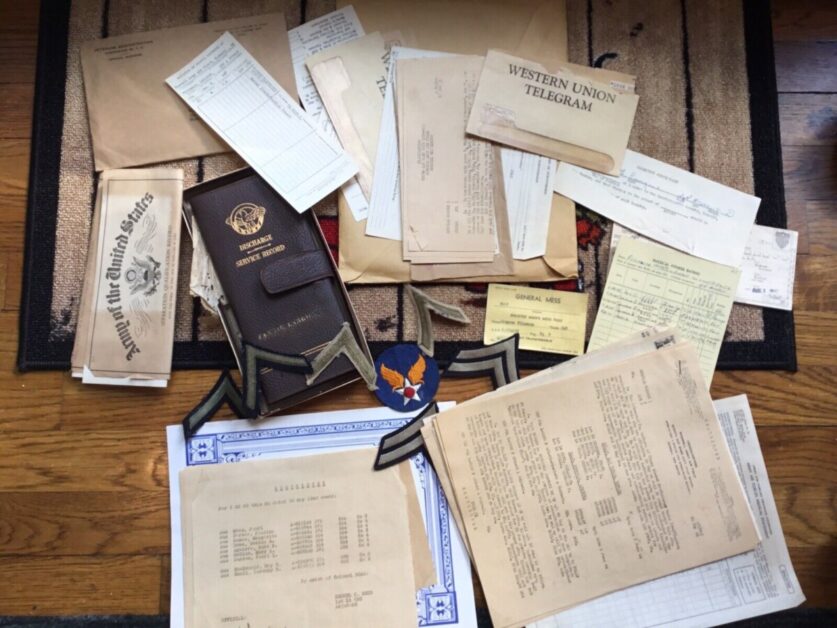
Detail of ephemera included in the collection
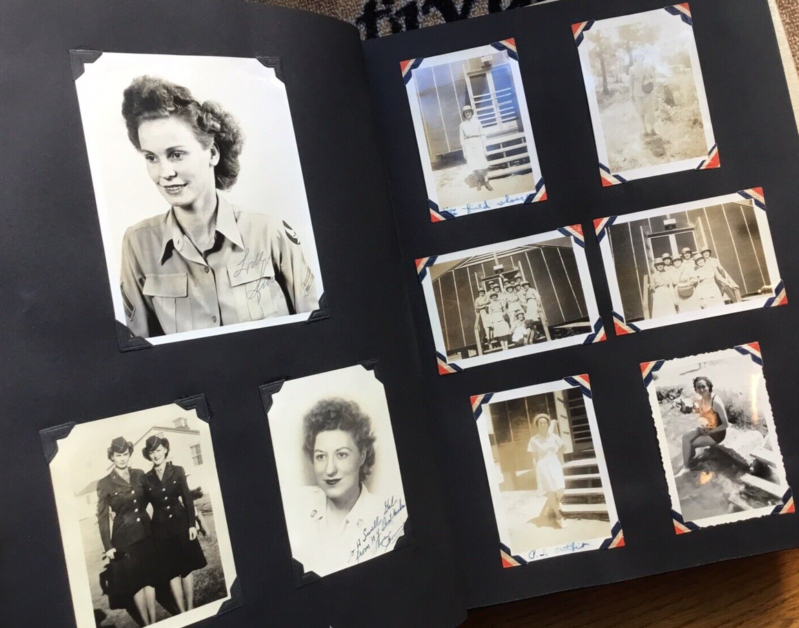
Detail of photograph album
Nina M.H. Photograph Album
This album documents the experience of one woman who trained at the quasi-military First National Service School in Chevy Chase, Maryland during World War I. Established by the Women’s Section of the Navy League, which was the first “national women’s preparedness” organization, the service schools were training camps in which women learned about national defense, citizenship, and American history. At these camps women wore military-styled uniforms and practiced calisthenics, drilling, marching, first aid, and marksmanship.
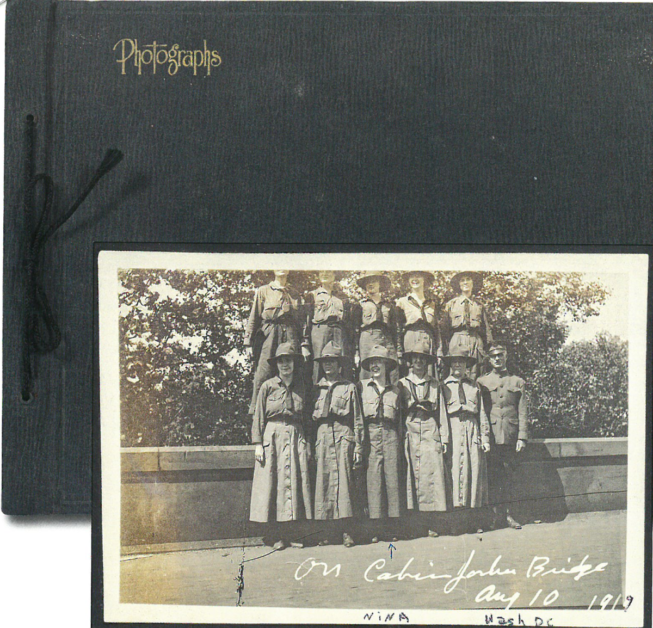
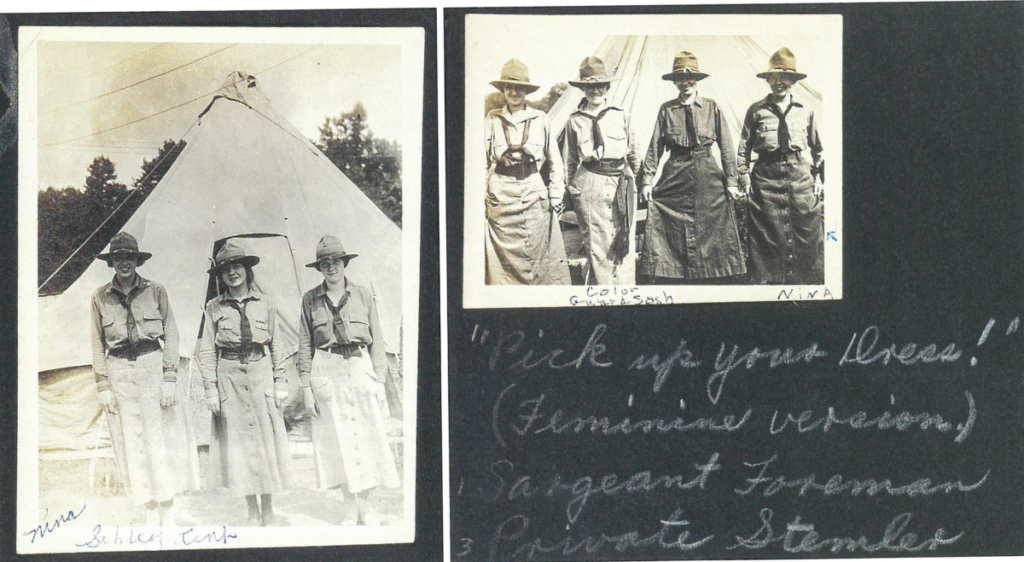
Mildred A. Higgins Collection
Higgins served in the U.S. Army Nurse Corps during World War II. The collection includes photographs, letters and ephemera documenting her time stationed at the 228th Station Hospital in Sherburne, England.
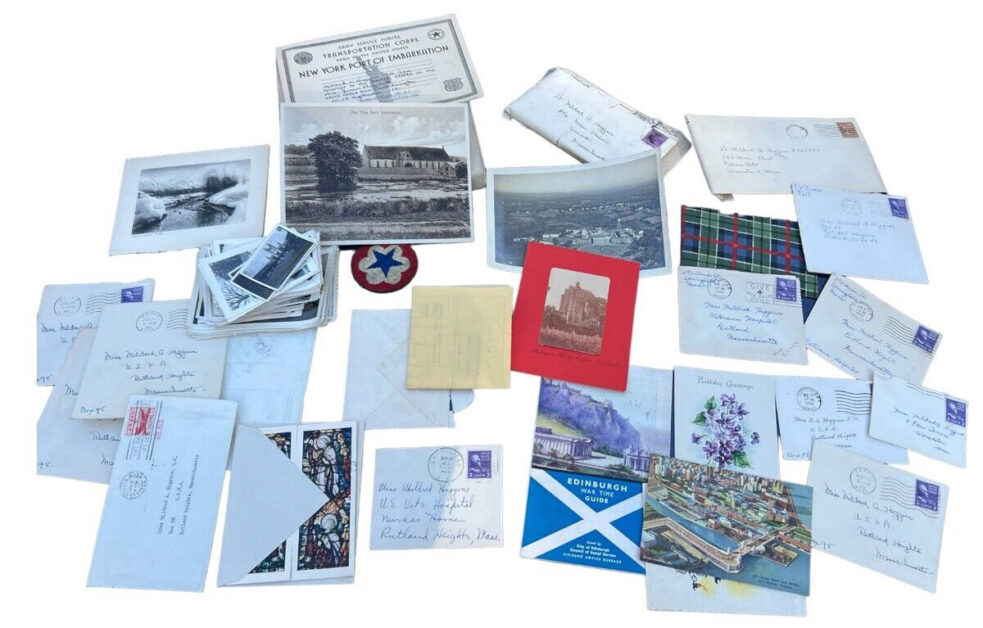
U.S. Army Service Club Worker Scrapbook
The unidentified woman who created this scrapbook was an employee of the U.S. Army Service Club Program. The scrapbook documents her time at various American clubs in Germany in the late 1950s.
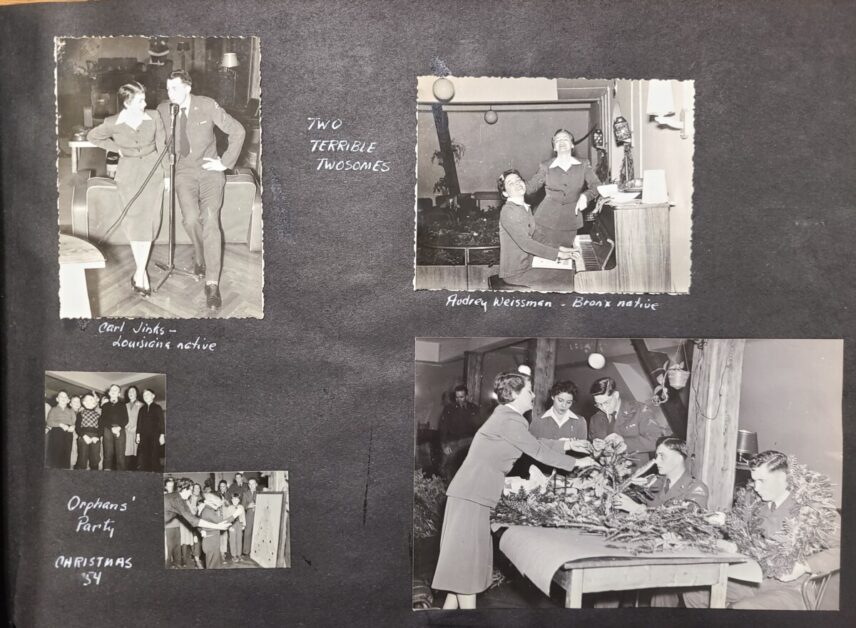

Two-page spread of the photograph album
“The American Red Cross Coffee & Doughnut Award”
This plaque was presented to U.S. Navy Captain Eduguardo Martin Coppola, the Commander at USN Naval Station in Sangley Point, Philippines, circa 1971. The award includes the ode “The American Red Cross is great indeed, Gives coffee and doughnuts to men in need, To our C.O. (commanding officer) who never received his share, This plaque will show that we care.”
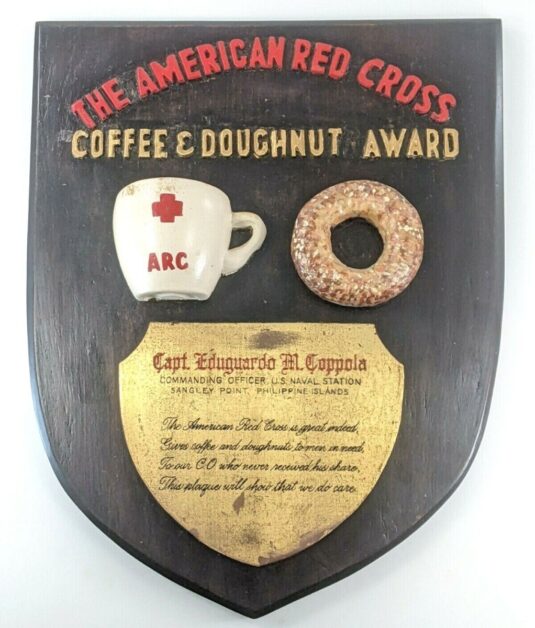
“Overseas Woman“
This publication, published April 1945, was issued by the U.S. Special Information Services. It was aimed at women in the Army Nurse Corps, the Women’s Army Corps, and American Red Cross, who were serving in the ETO (European Theater of Operations.) The stated mission of the magazine was “to be a link to the home-front, a channel of introduction to the people and countries in which we are stationed, [and] a hand of friendship linking together all American women serving here.”
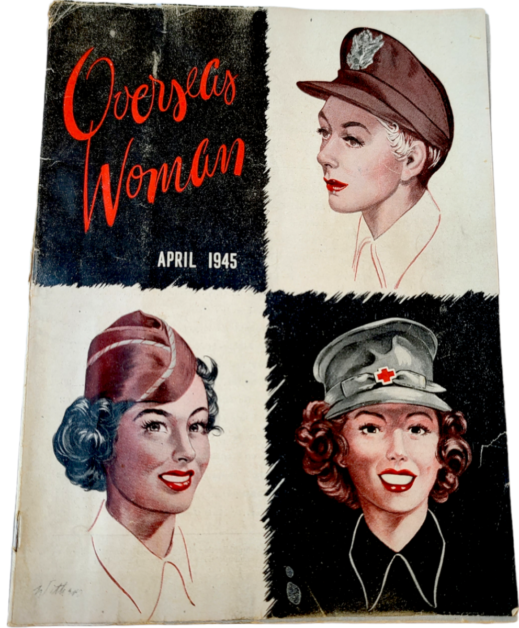
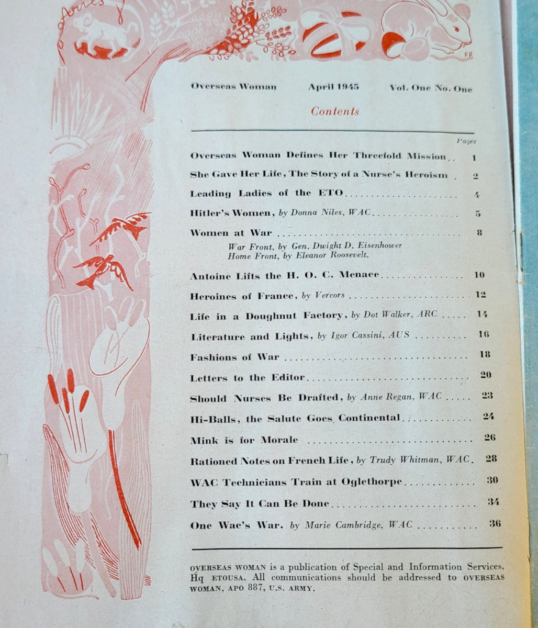
“I’ll Soon Come Back to You, Sweetheart!”
This “Service Woman’s Fun Book” was published in 1944 and contains cartoons and humor for and about WACS, WAVES, SPARS, and MCWRs. The “sweetheart” referenced in the title appears to be a fashionable hat!
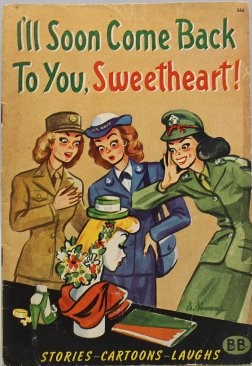
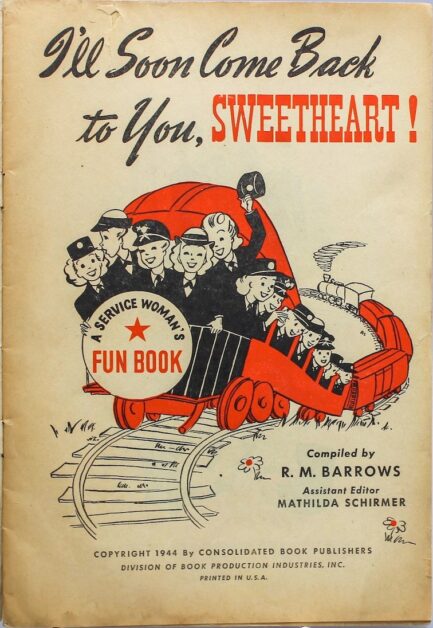
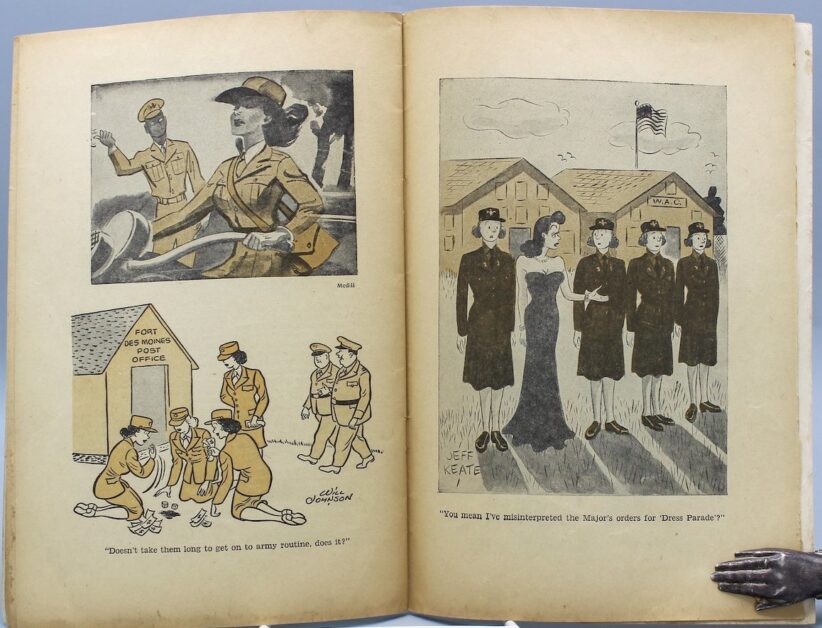
Selection of Recruiting Brochures
WVHP continues to add examples of recruiting brochures to our collection. We recently purchased two post-WWII publications.
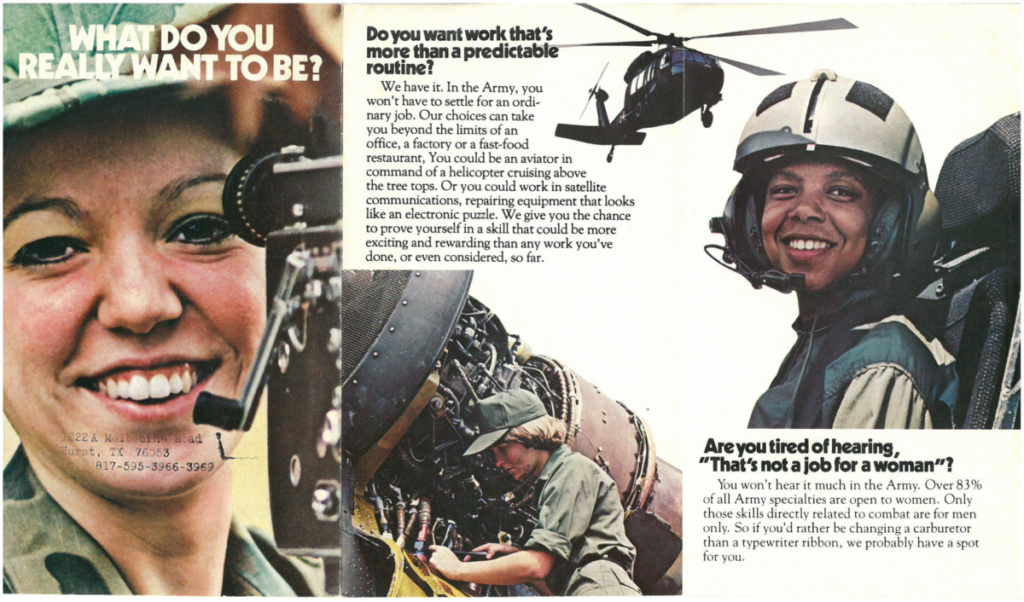
“How the WAFS Make the Team”
1950 Women in the Air Force recruiting brochure
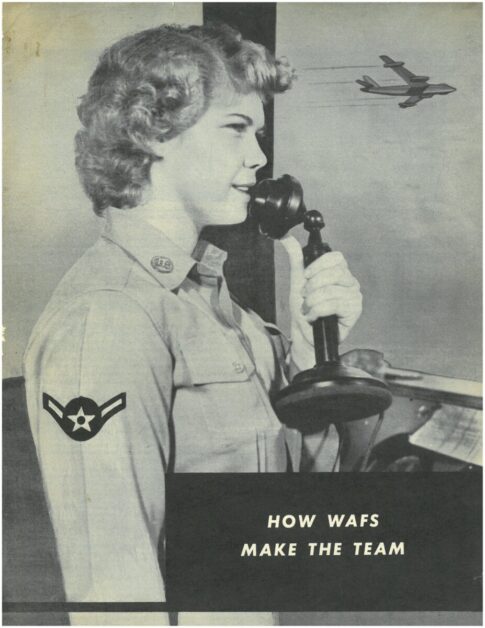
UNIVERSITY ARCHIVES
Portrait of Julius I. Foust
This portrait of the second president of the university, Julius I. Foust, was transferred from the Foust Building where it hung for many years in the lobby.
In 1902, he became a professor of pedagogy at the North Carolina State Normal and Industrial College (now UNCG). After the death of first president and founder, Charles Duncan McIver, in 1906, Foust became acting president of the College. The following year he was made president, serving in that capacity until 1934 when he became president emeritus of the College.
During his long and esteemed career, Foust served as president of the North Carolina Association of City School Superintendents, president of the North Carolina Teachers Assembly, president of the North Carolina Association of Colleges, and a member of the Board of Directors of the A and M College (now North Carolina Agricultural and Technical State University.) He was also the author of a textbook on the geography of North Carolina and co-author of a spelling book.
Foust remains the longest-serving administrative leader in UNCG’s history. In 1960, the “Main Building,” the only remaining structure from the school’s founding year — was renamed in his memory. He died at Lakeland, Florida, February 15, 1946.
